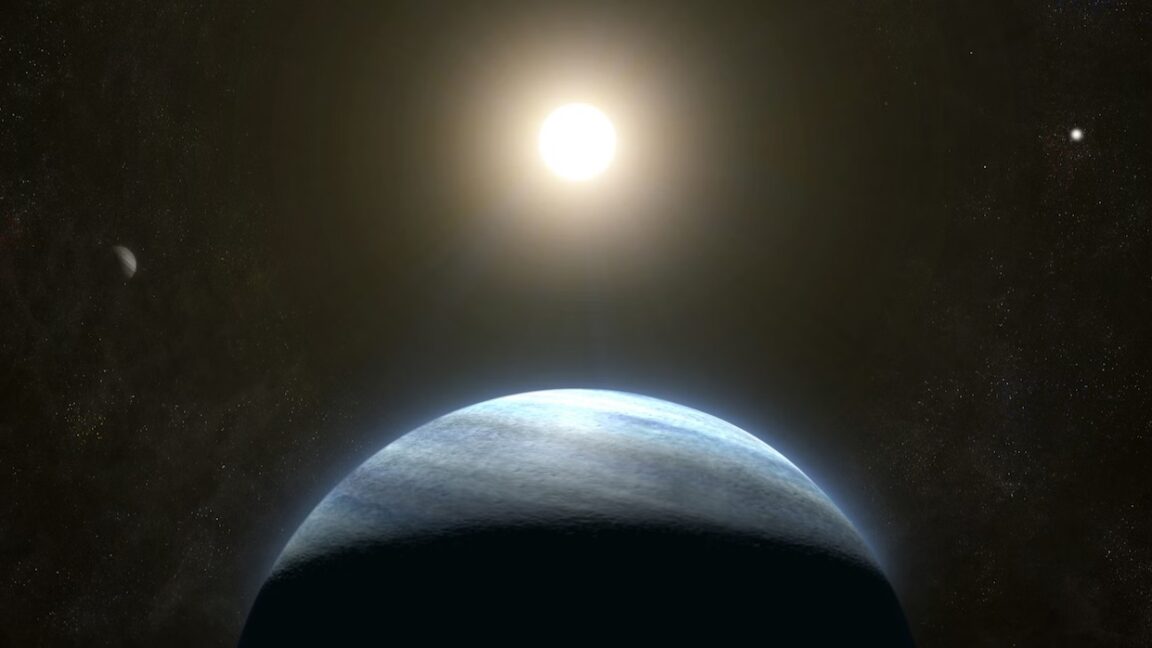
On Wednesday, news broke that researchers had found the most compelling evidence yet of a "biosignature"—a chemical present at levels that are only consistent with life—on a distant exoplanet. It didn't take much time for some less-than-reliable news sources to go from there to talk of a planet that "could be 'teeming with life'" and the obvious follow-up, "Scientists reveal what aliens could REALLY look like on exoplanet K2-18b."
Even in the best of circumstances, however, talk of a biosignature is an invitation to scientists to think of alternative chemistries that could explain the results without needing biological activity. And these are not the best of circumstances, as astronomers are pointing to earlier papers that give a range of reasons to be skeptical of the new results; in fact, an astronomer named Chris Glein emailed me to alert me of potential issues the day before the news broke.
To help you understand the controversy, we're going to look at the data that is being presented as evidence of a biosignature and then go through all the reasons that confirming a biosignature is so difficult.
What’s new here
The planet under discussion is called K2-18b, and it's what's termed a sub-Neptune. It has a radius of about 2.5 times that of Earth's and is 8.6 times more massive. Its orbit is also within the inner edge of its star's habitable range, meaning it receives enough radiation from its star that water could be liquid on its surface, depending on other factors like its atmosphere's composition. All of this can be determined based on its orbital properties and the amount of light that it blocks out as it passes between Earth and its host star. As the new paper acknowledges, these properties are consistent with a number of different planet types, including a small version of Neptune or a rocky planet with a very thick, hydrogen-rich atmosphere. But the researchers behind the new work favor what's called a hycean planet, a merger of hydrogen and ocean. That's because the initial characterization of its atmosphere suggested that, in addition to copious amounts of hydrogen, it had methane and carbon dioxide present but seemingly lacked ammonia and carbon monoxide. The presence of an ocean can account for those chemical properties. The new paper follows up on a tantalizing hint raised by earlier work: the possible presence of a chemical called dimethyl sulfide. It uses an instrument on the James Webb Space Telescope (JWST) to image K2-18b as it passes in front of its host star. A small portion of the light that reaches Earth does so after having passed through the planet's atmosphere, allowing the chemicals present there to leave a mark on the spectrum of that light. The research team used two different methods of constructing a spectrum from the JWST data, and the results are in good agreement. They then searched for a combination of molecules that could produce a similar spectrum, starting with a list of 20. They found two: dimethyl sulfide and dimethyl disulfide (we can't tell the difference between the two, given the existing data). On Earth, the only processes that naturally produce this chemical take place inside cells, and it had previously been suggested to be a biosignature. So, the researchers propose it may be a biosignature here, although they acknowledge that the statistical significance of its signal, currently at three sigma, falls short of declaring a clear discovery. Still, that would qualify it as, in the words of a University of Cambridge press release, the "strongest hints yet of biological activity."Reasons for doubt
So why are many astronomers unconvinced? To be compelling, a biosignature from an exoplanet has to clear several hurdles that can be broken down into three key questions:- Is the planet what we think it is?
- Is the signal real?
- Are there other ways to produce that signal?
